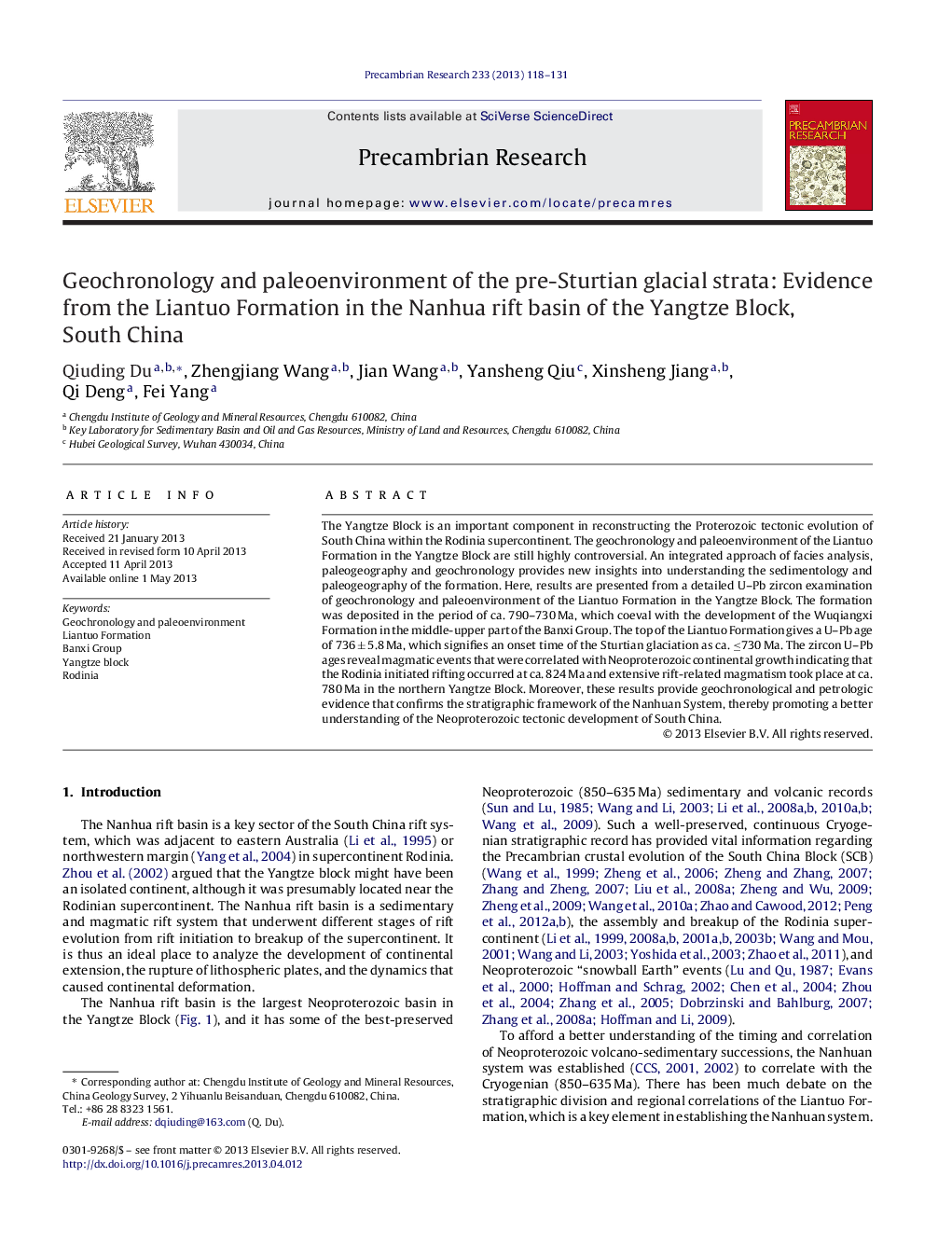| Article ID | Journal | Published Year | Pages | File Type |
|---|---|---|---|---|
| 6442342 | Precambrian Research | 2013 | 14 Pages |
Abstract
The Yangtze Block is an important component in reconstructing the Proterozoic tectonic evolution of South China within the Rodinia supercontinent. The geochronology and paleoenvironment of the Liantuo Formation in the Yangtze Block are still highly controversial. An integrated approach of facies analysis, paleogeography and geochronology provides new insights into understanding the sedimentology and paleogeography of the formation. Here, results are presented from a detailed U-Pb zircon examination of geochronology and paleoenvironment of the Liantuo Formation in the Yangtze Block. The formation was deposited in the period of ca. 790-730 Ma, which coeval with the development of the Wuqiangxi Formation in the middle-upper part of the Banxi Group. The top of the Liantuo Formation gives a U-Pb age of 736 ± 5.8 Ma, which signifies an onset time of the Sturtian glaciation as ca. â¤730 Ma. The zircon U-Pb ages reveal magmatic events that were correlated with Neoproterozoic continental growth indicating that the Rodinia initiated rifting occurred at ca. 824 Ma and extensive rift-related magmatism took place at ca. 780 Ma in the northern Yangtze Block. Moreover, these results provide geochronological and petrologic evidence that confirms the stratigraphic framework of the Nanhuan System, thereby promoting a better understanding of the Neoproterozoic tectonic development of South China.
Keywords
Related Topics
Physical Sciences and Engineering
Earth and Planetary Sciences
Geochemistry and Petrology
Authors
Qiuding Du, Zhengjiang Wang, Jian Wang, Yansheng Qiu, Xinsheng Jiang, Qi Deng, Fei Yang,
